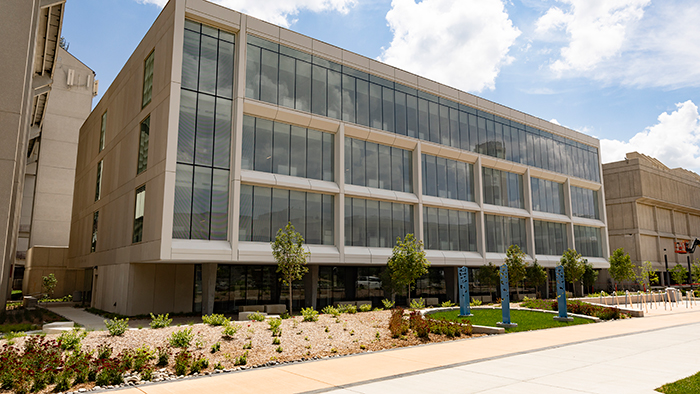
GGP Seminar: Micah Mayle - "Potential lithosphere and asthenosphere melt sources of early syn-rift magmatism: Insights from 1D geodynamic models"

- Date and time
- 3:30 PM - 4:30 PM, April 28, 2023
- Description
Micah Mayle is currently a PhD candidate at Colorado State University. He is an alumnus of Missouri State University - Geology, BS, 2014.
This presentation will talk about geochemical and isotopic signatures of magmatism from many continental rifts such as the East African Rift System, the Rio Grand Rift, and West Antarctic Rift System. All suggest that potential sources of syn-rift magmatism vary with time. The earliest magmas erupted during nascent rifting and are likely produced by the melting of fertile lithologies in the lithosphere or asthenosphere. Later magmatism, occurring in mature rifts, are the result of less fertile asthenosphere-derived melts. Potential fertile sources in the mantle (pyroxenite-, eclogite-, and amphibole-bearing source rocks, as well as wet Iherzolite) responsible for the geochemical signatures, have been proposed to result from previous metasomatization, magmatism, or subduction.
We test the viability of a multi-lithology model consisting of fertile sources (pyroxenite, eclogite, or wet Iherzolite) in the ambient mantle (dry Ihersolite) using a new 1D (one-dimensional) geodynamic model. This model can be run with or without latent heat of melting and calculates the pressure-temperature conditions for an extending lithosphere and vertically ascending underlying asthenosphere through time. Results show that if a multi-lithology mantel is rifted, there will be a distinct pattern of magmatism. Latent heat absorbed during early syn-rift melting of the most fusible lithologies may reduce the temperature in the upper mantle sufficiently to inhibit a later melting of less fertile components that might be present. Thus, early syn-rift magmatism may delay, inhibit, or prevent later syn-rift melt production from fertile components in the mantle. Rift models that do not consider the latent heat of melting overestimate mantle temperatures and thus melt. They also underestimate the amount of extension required before melting begins and before peak melt production rates are achieved.
Micah obtained his master's degree in geophysics from Oklahoma State University in 2018. His current research utilizes 1D and 2D geodynamic models to better understand the sources and effects of syn-rift magmatism. Micah enjoys hiking and exploring Colorado in his spare time.
- Event sponsor
- Earth, Environment and Sustainability, School of
- Admission
Free
- Open to public, alumni, current students, faculty, future students
- Location
Additional information
- Event contact
- Carroll, Tracy
- Academic Administrative Assistant II
- TracyCarroll@MissouriState.edu
- 417-836-5800
- Visit website
